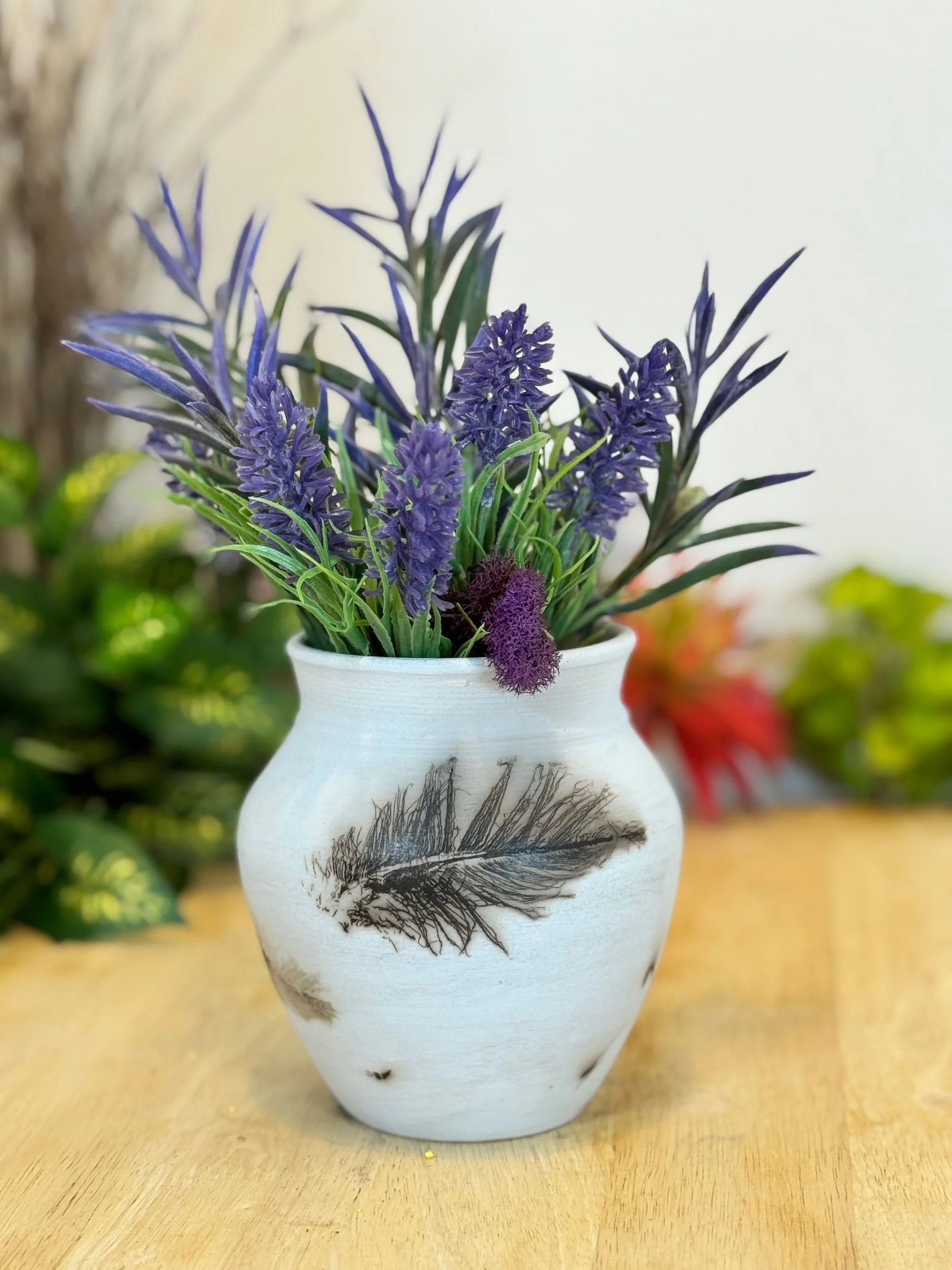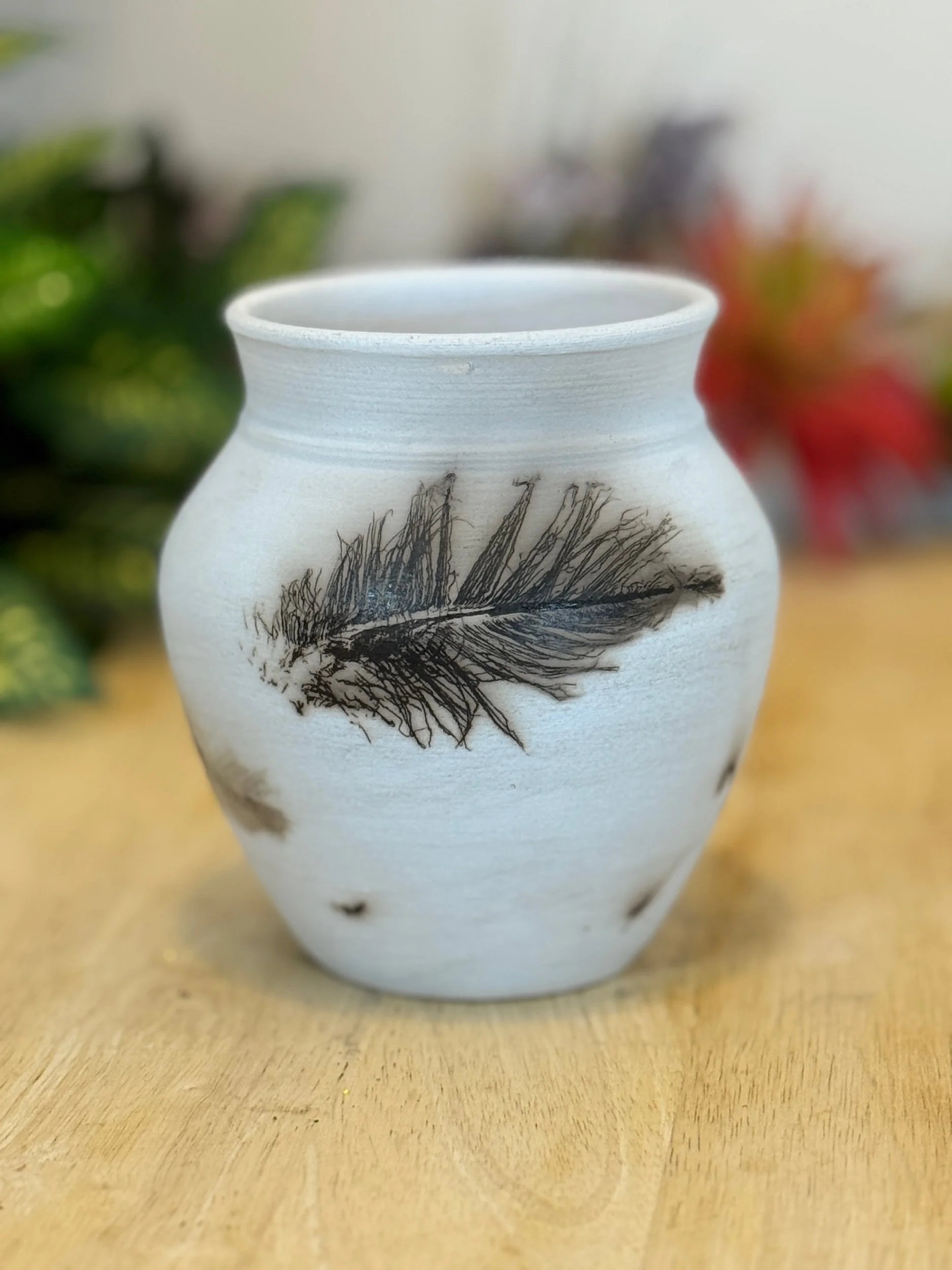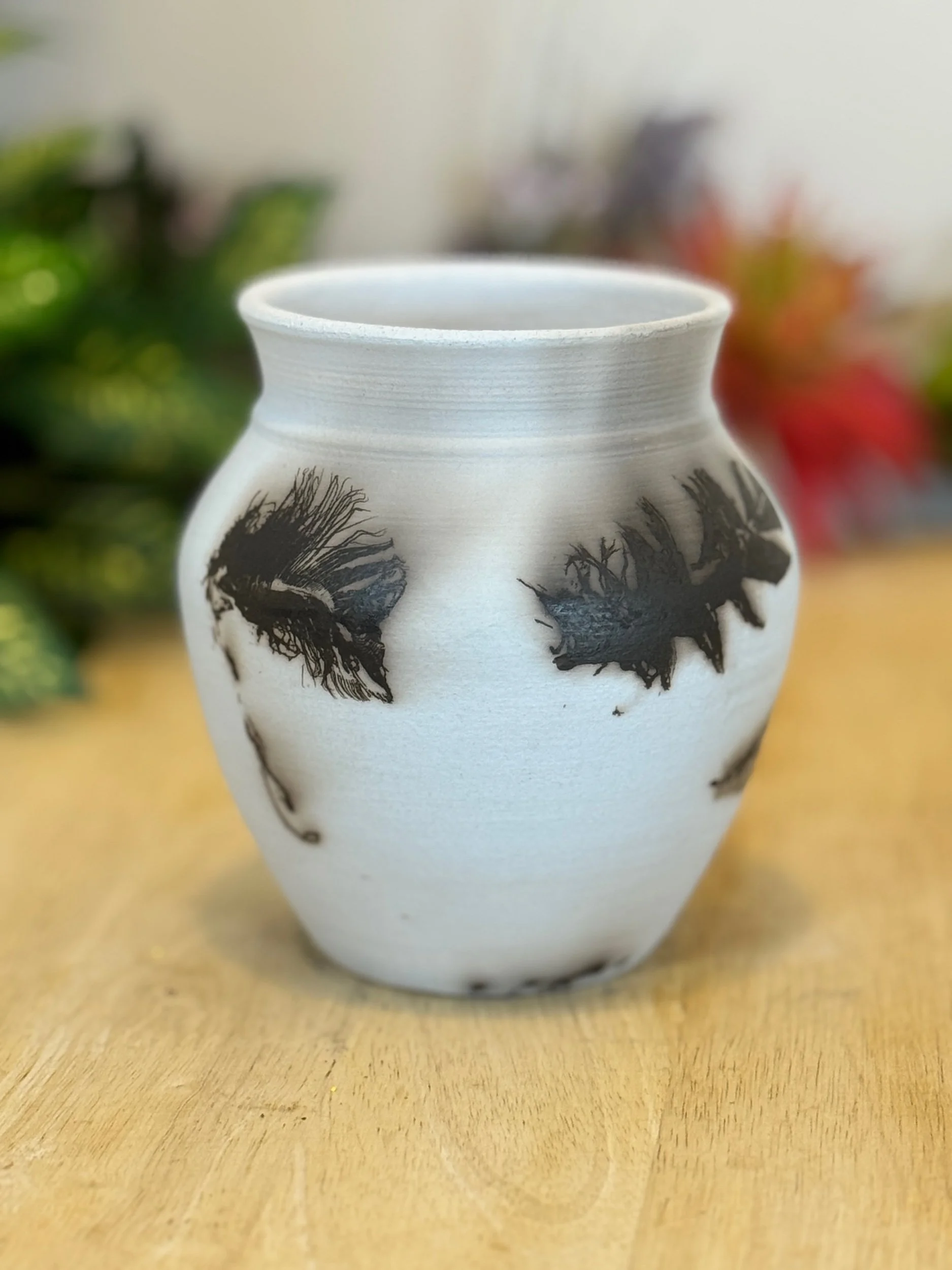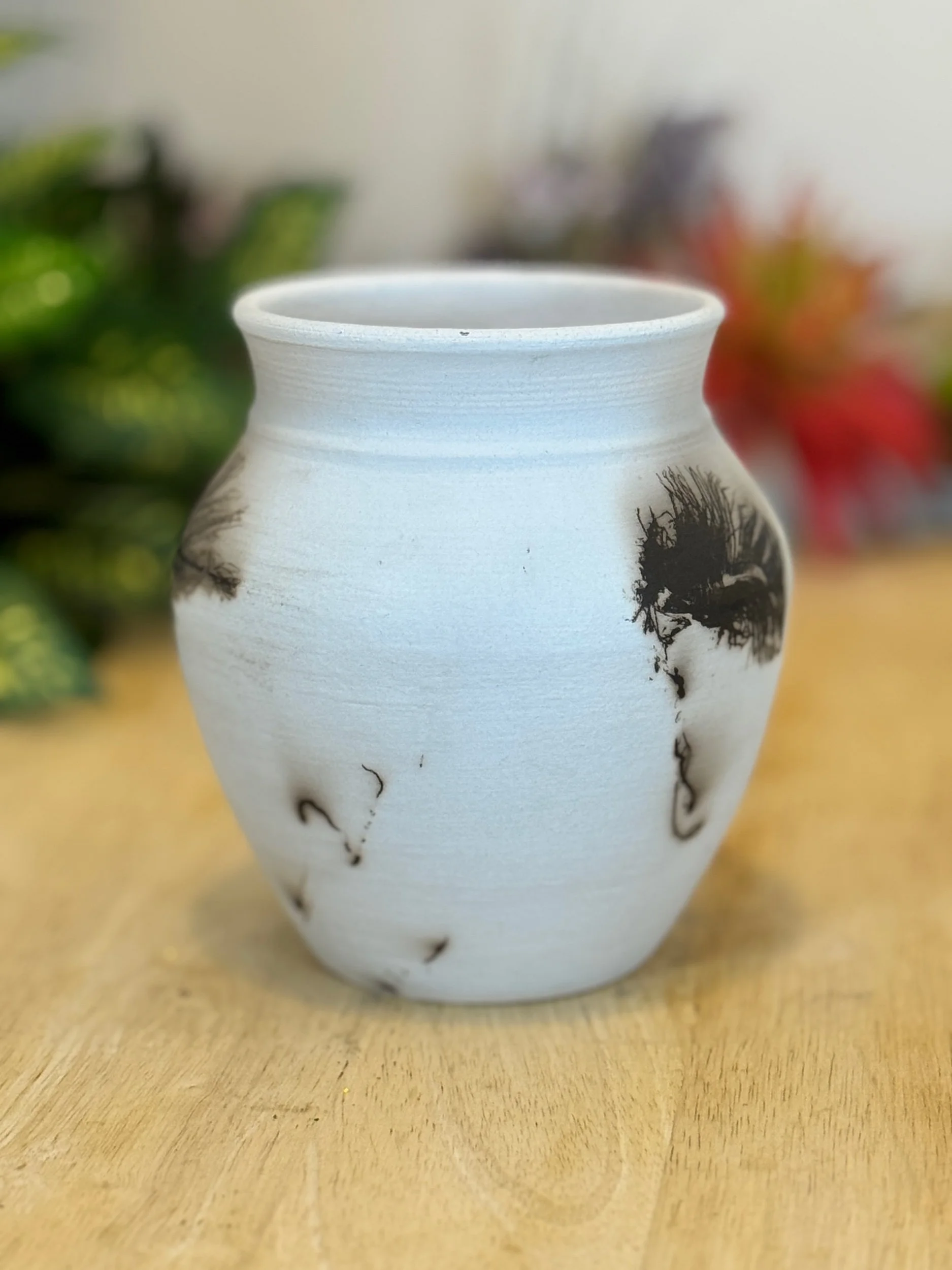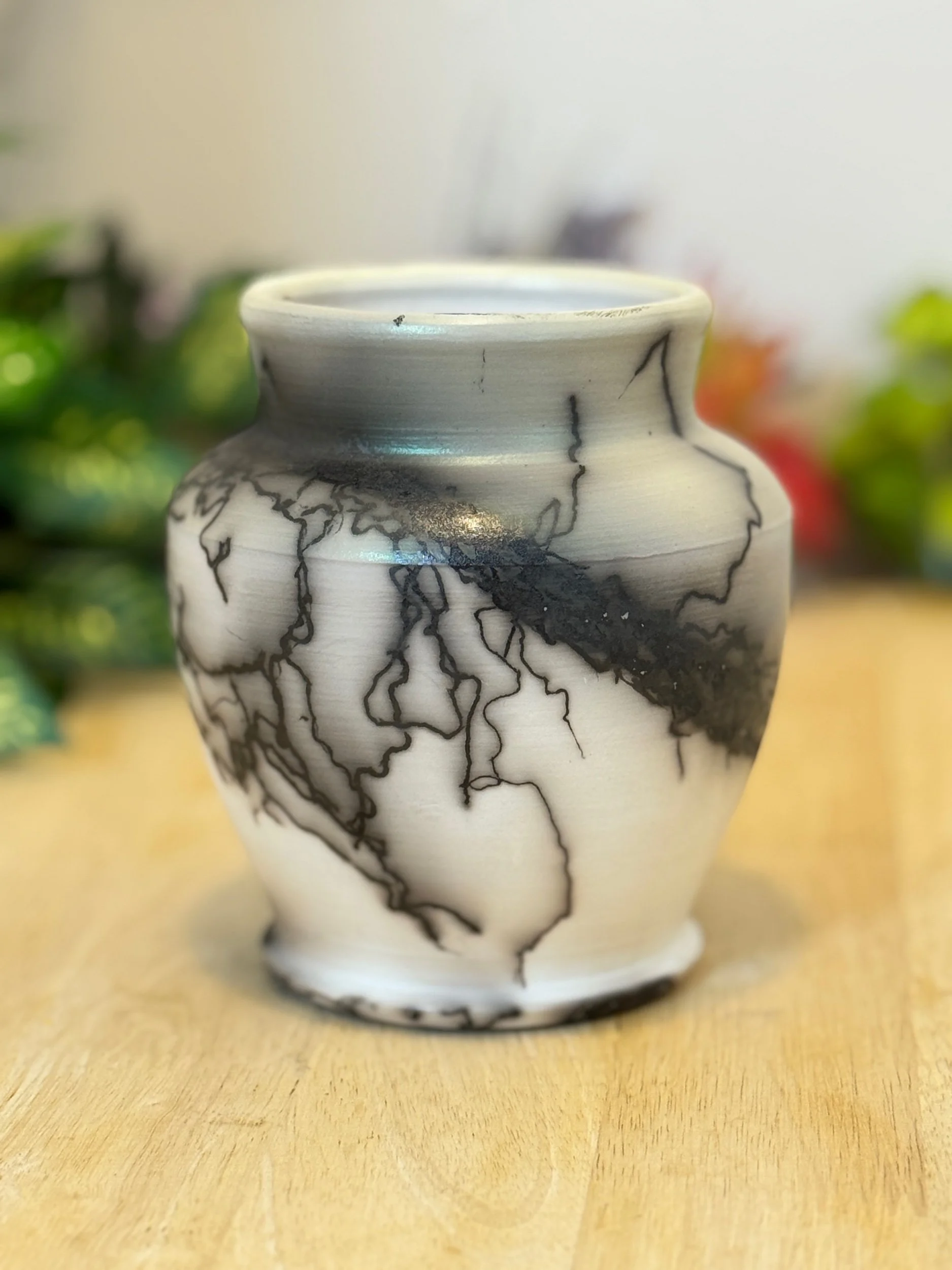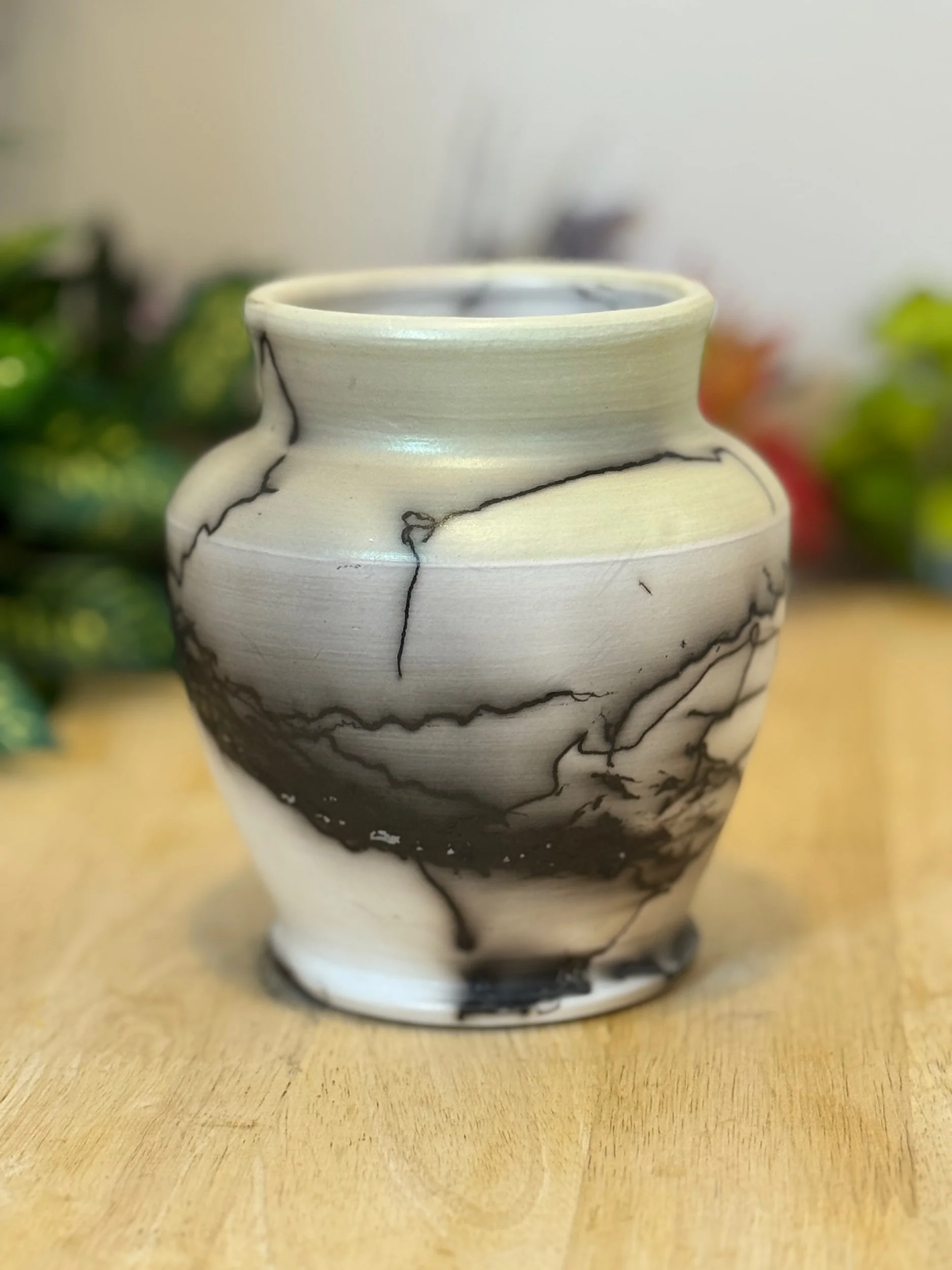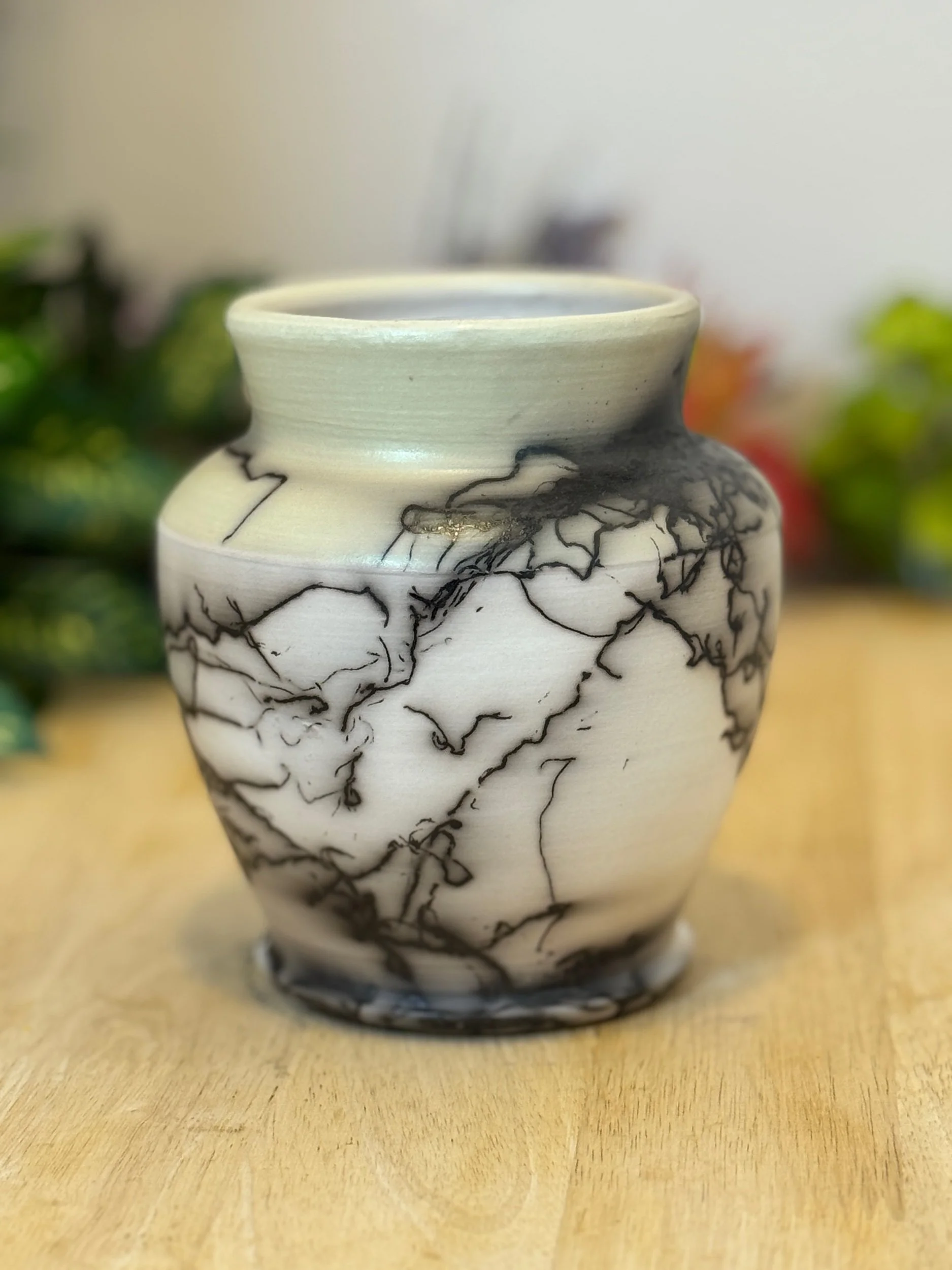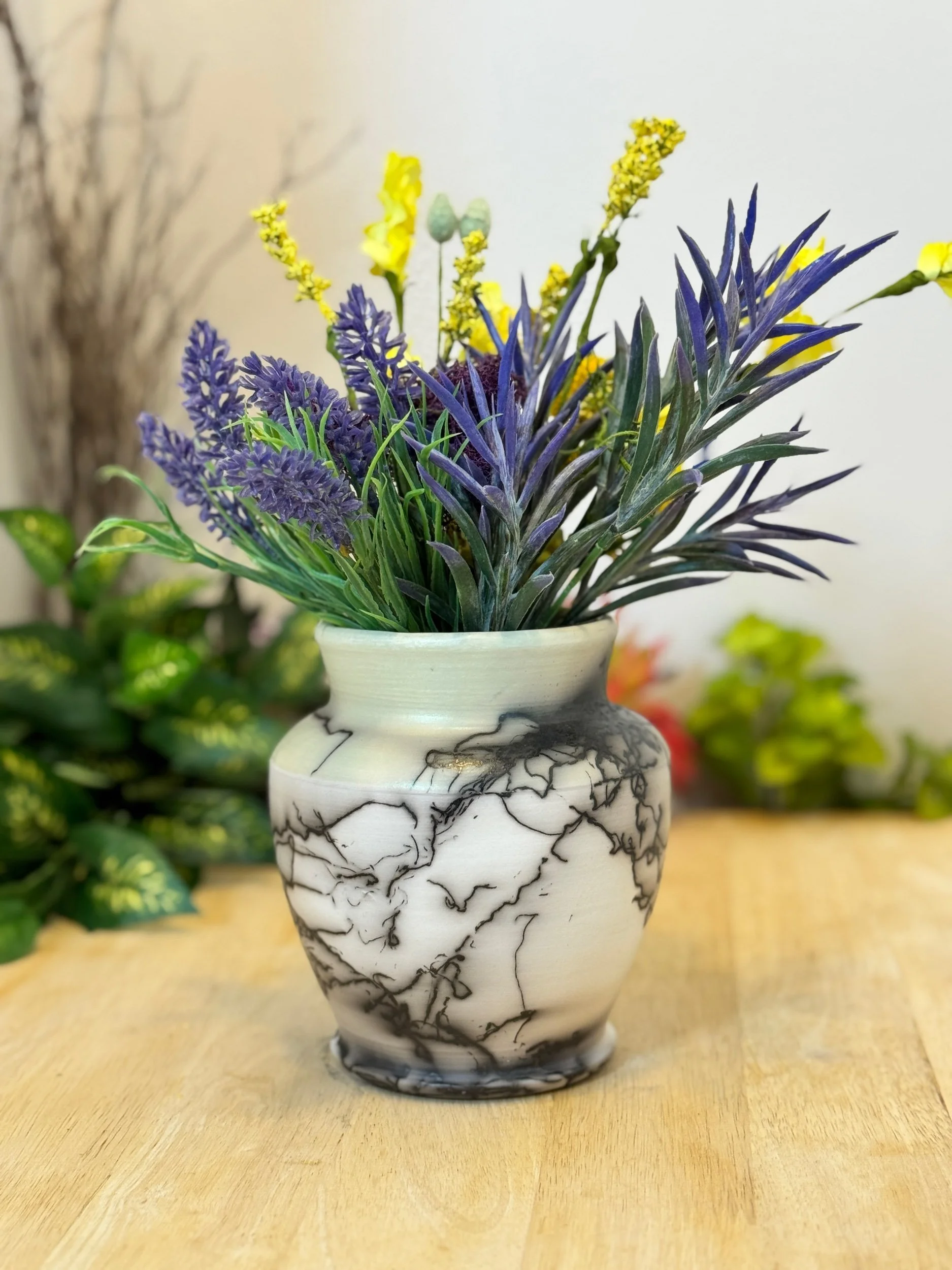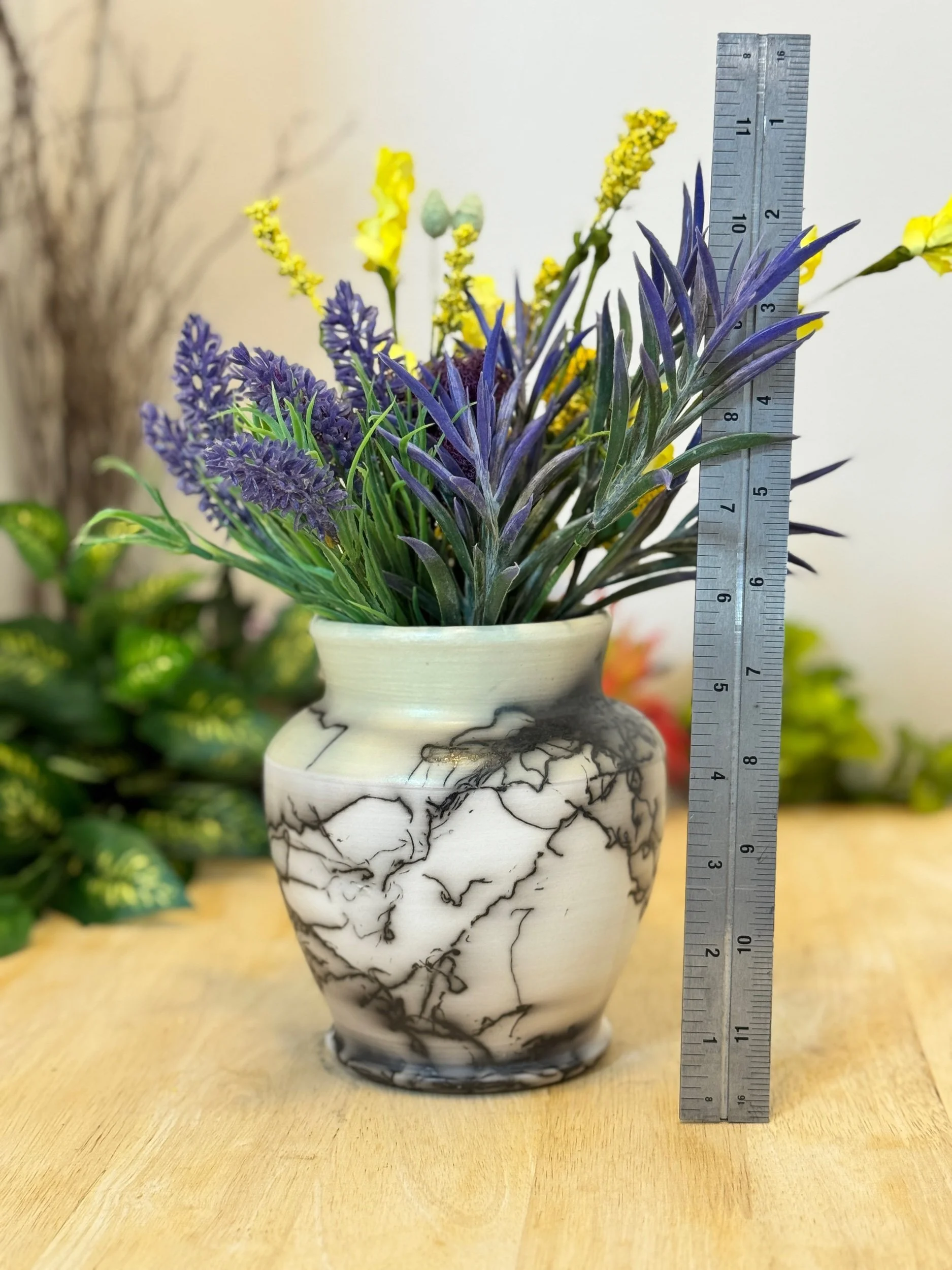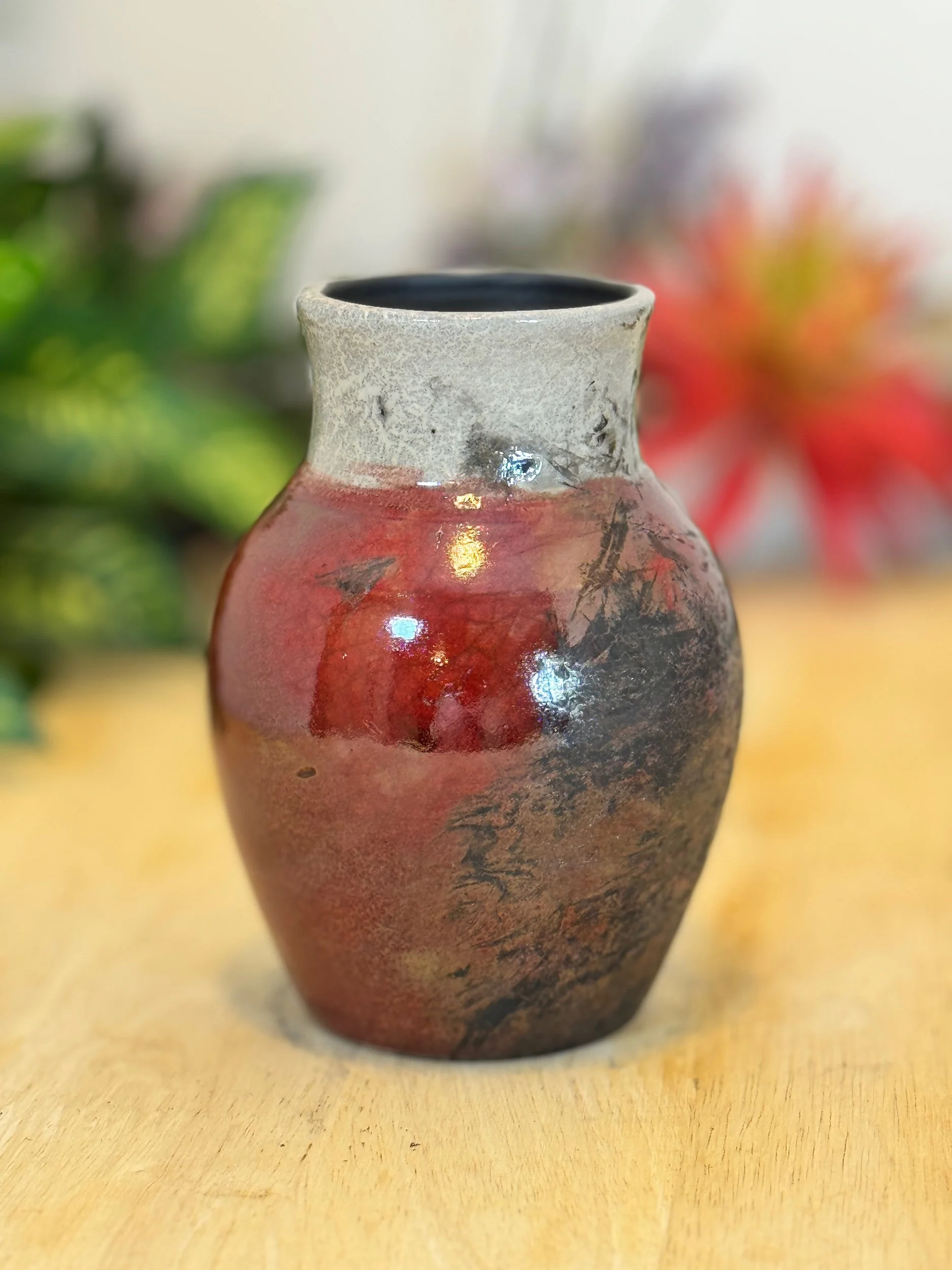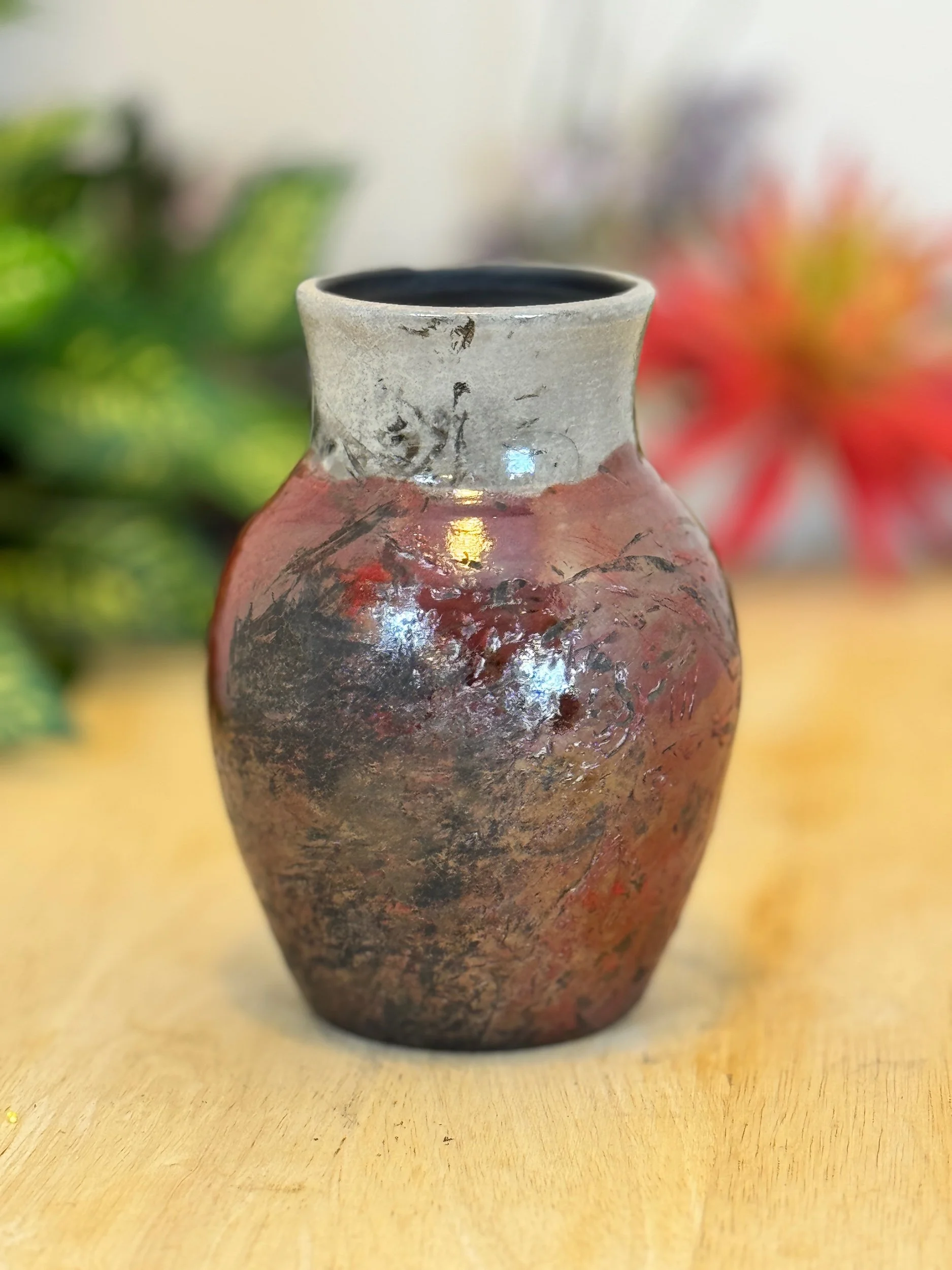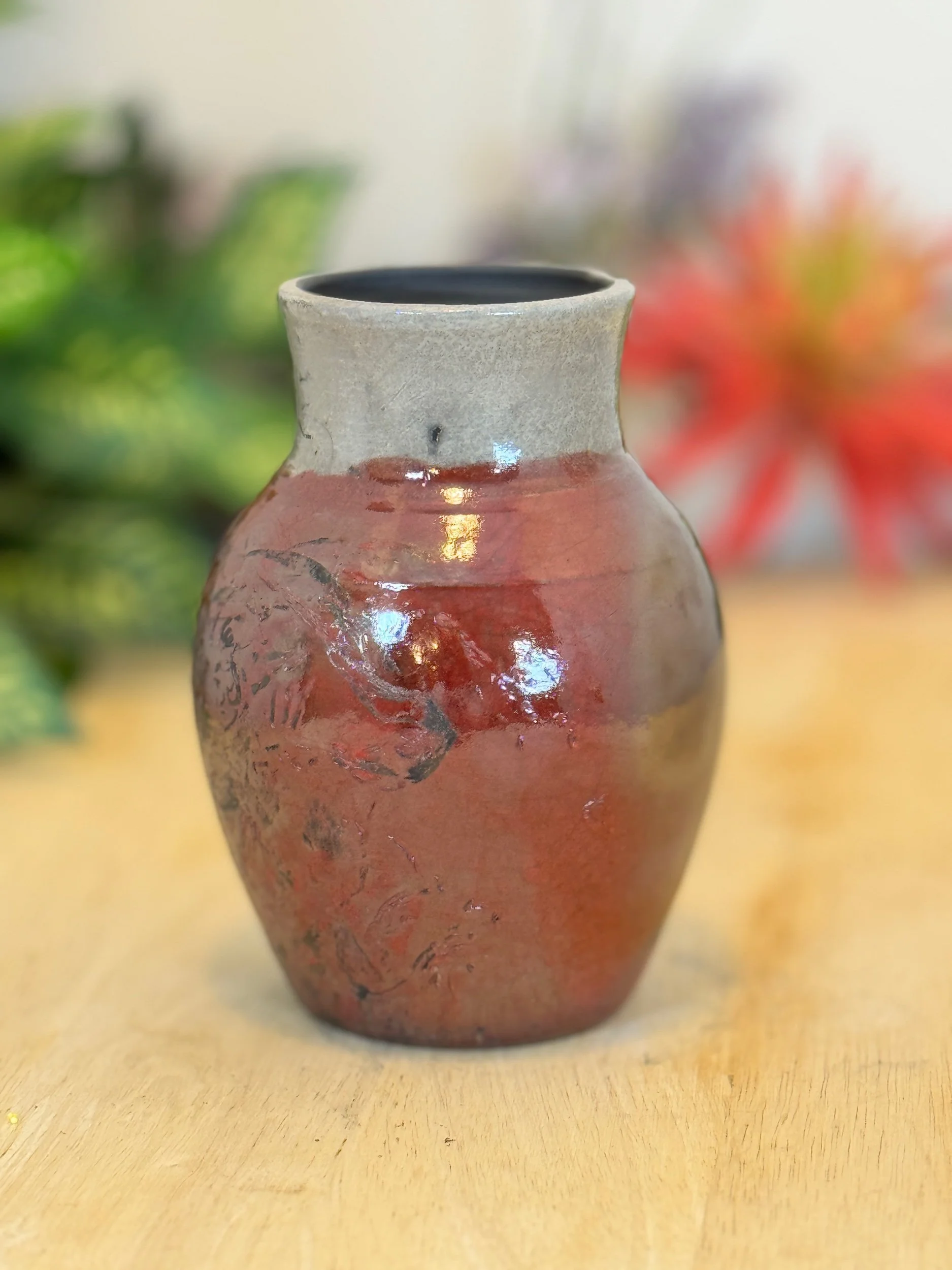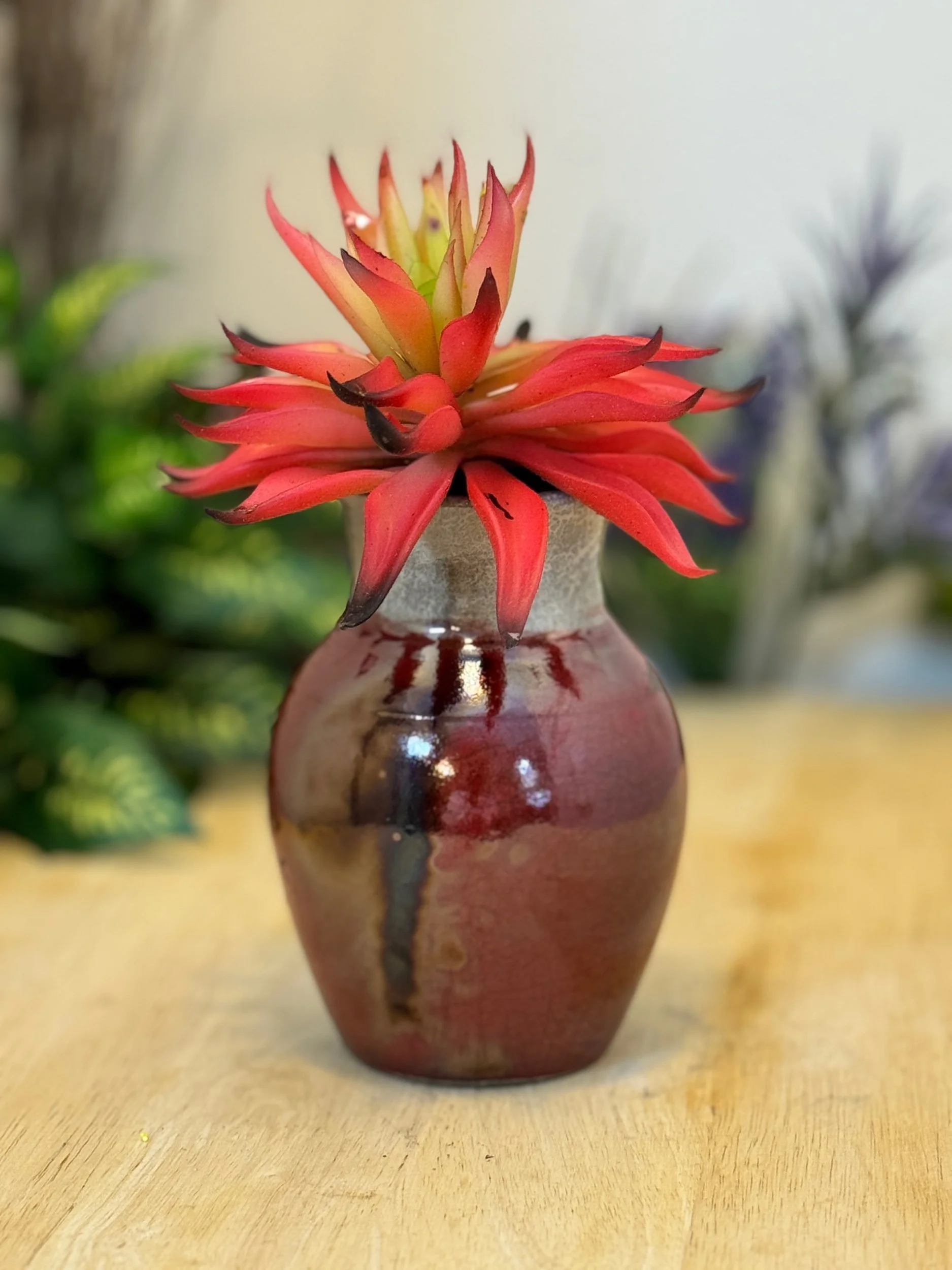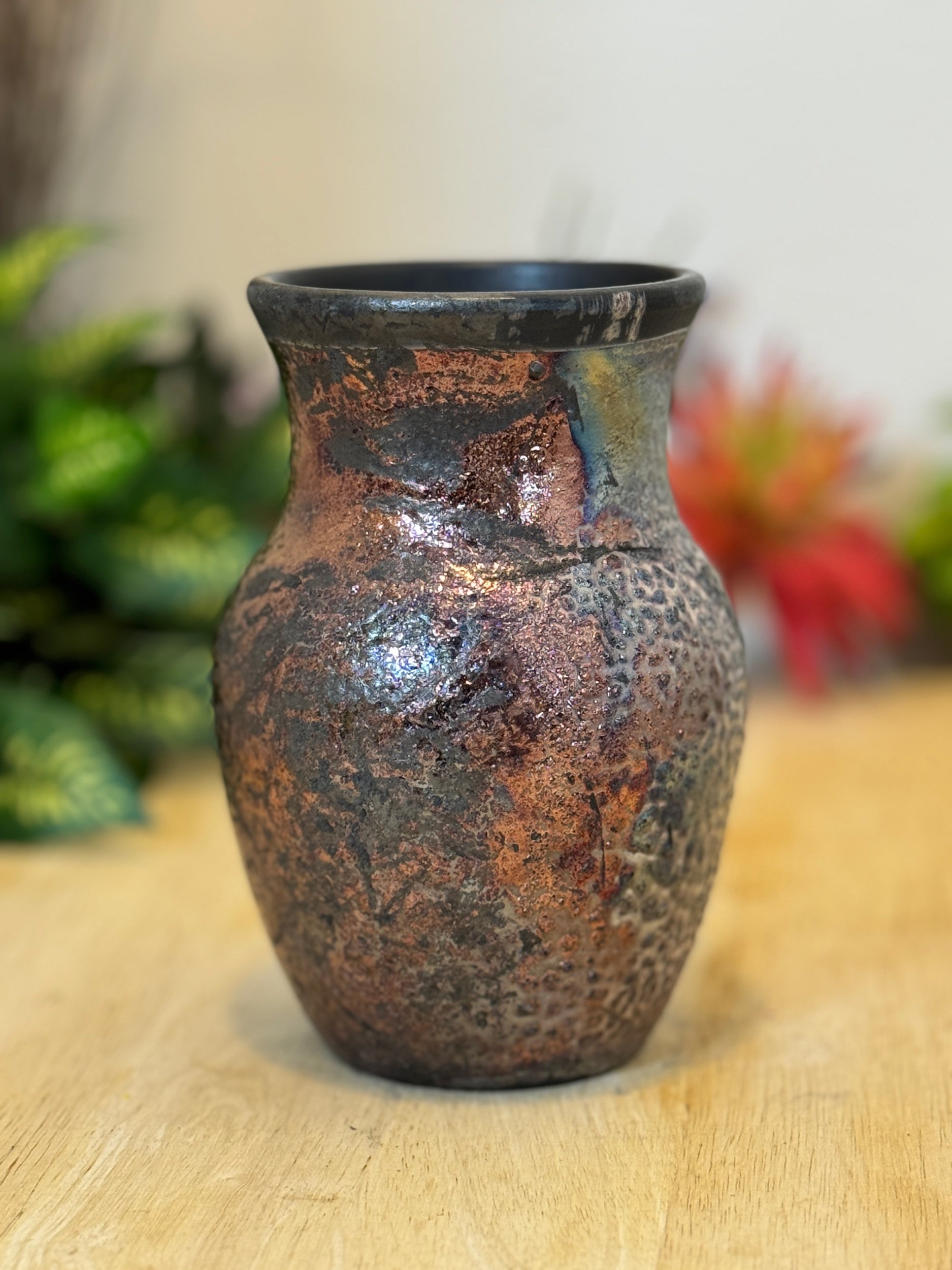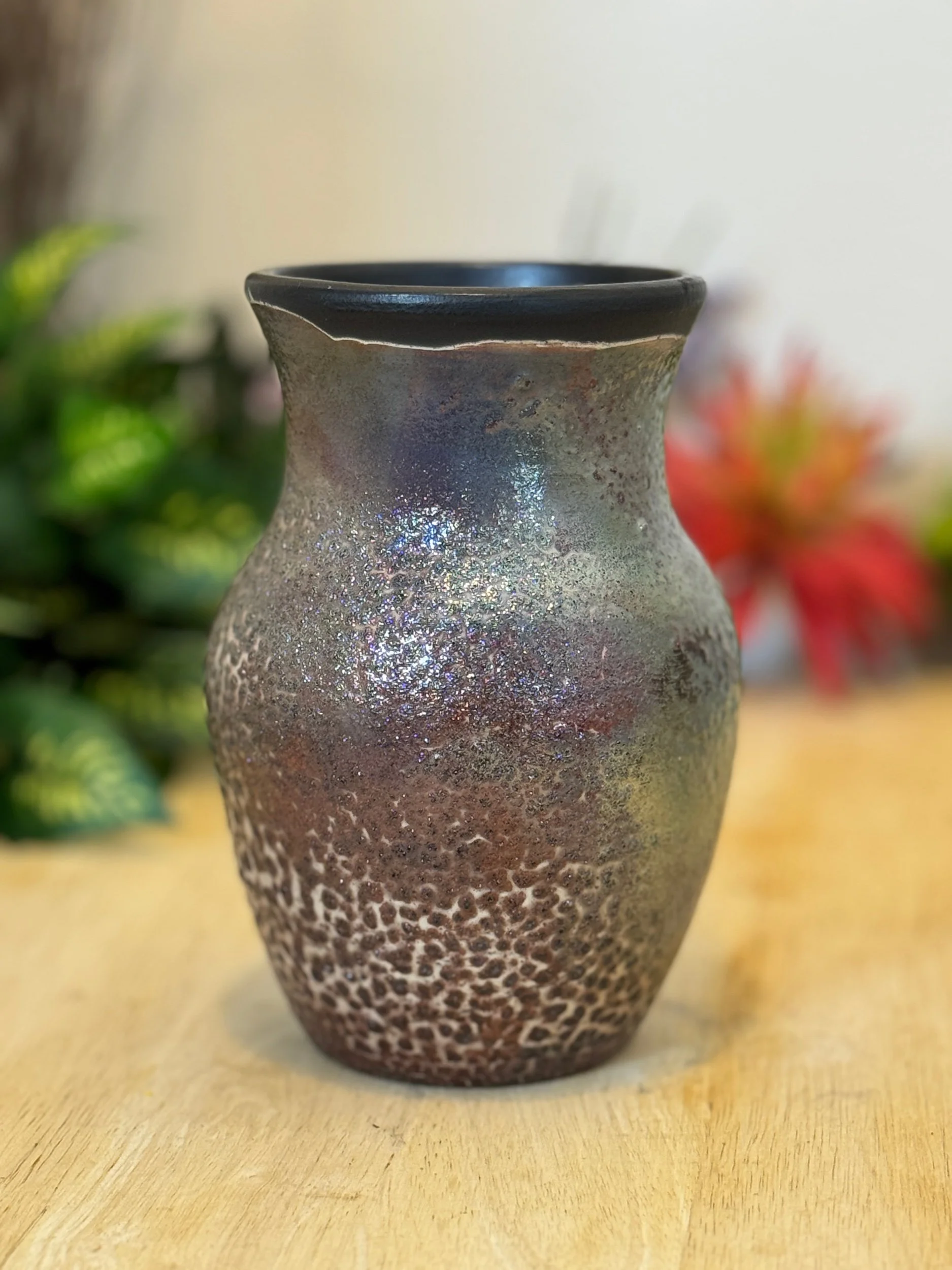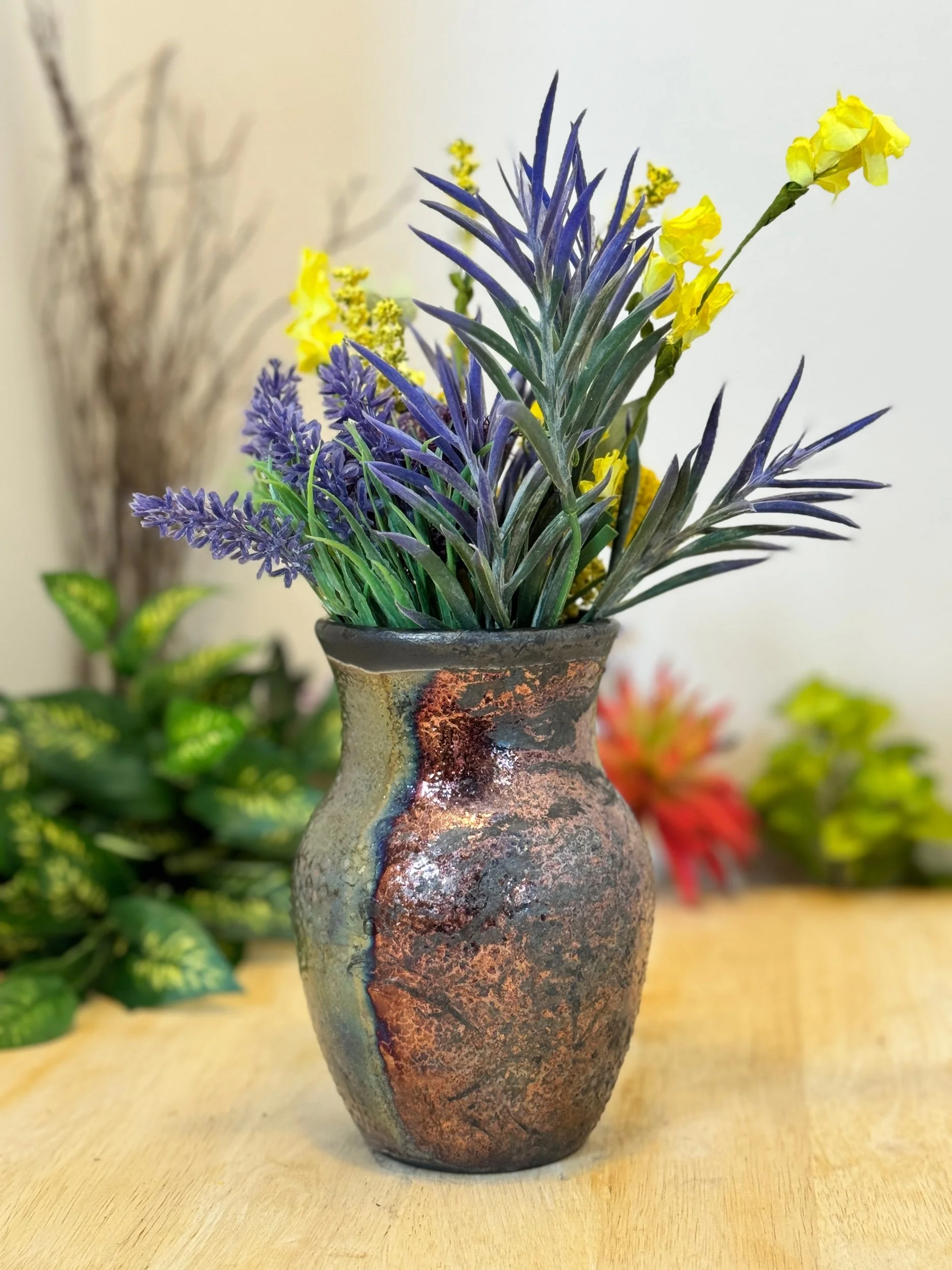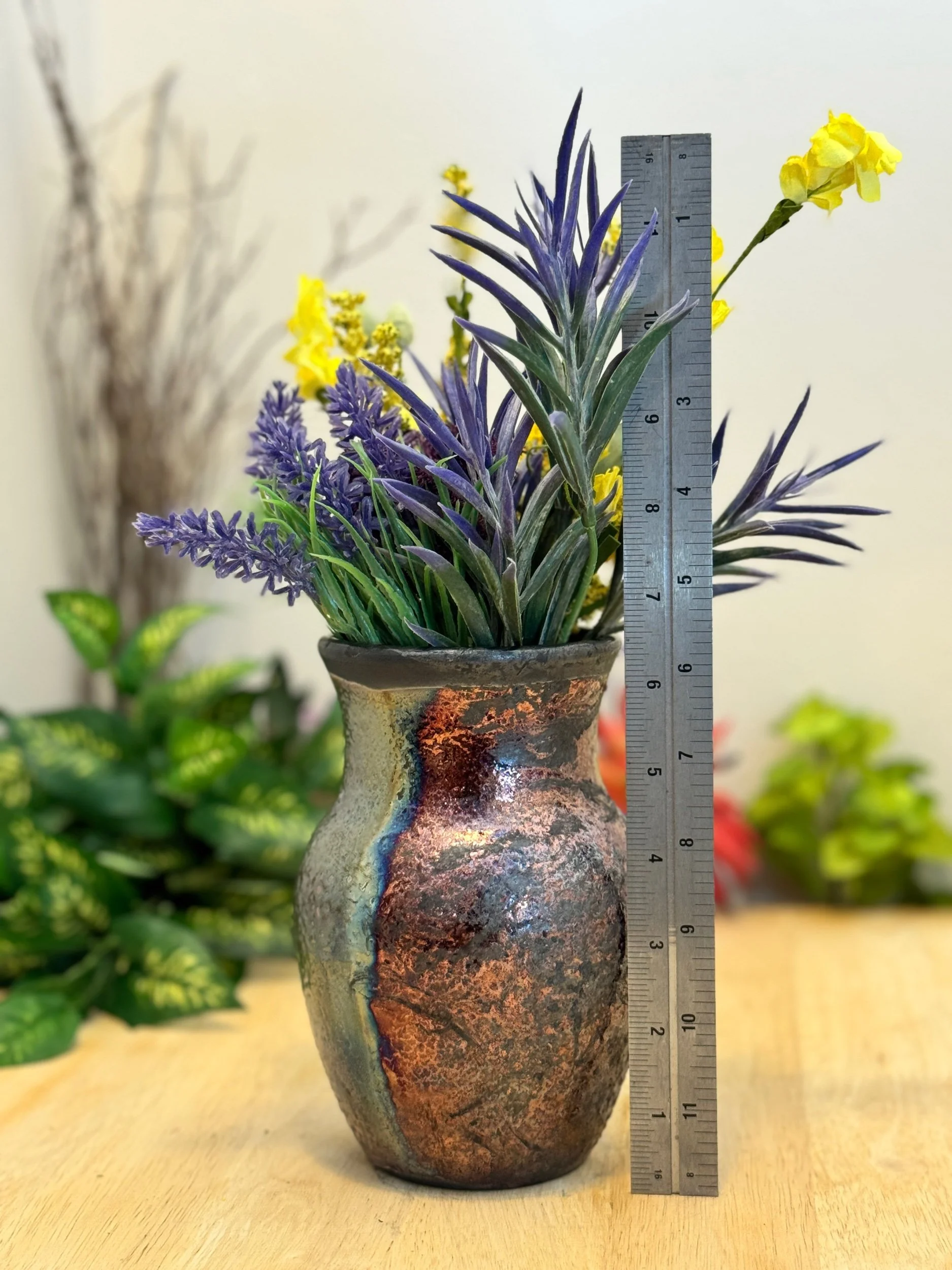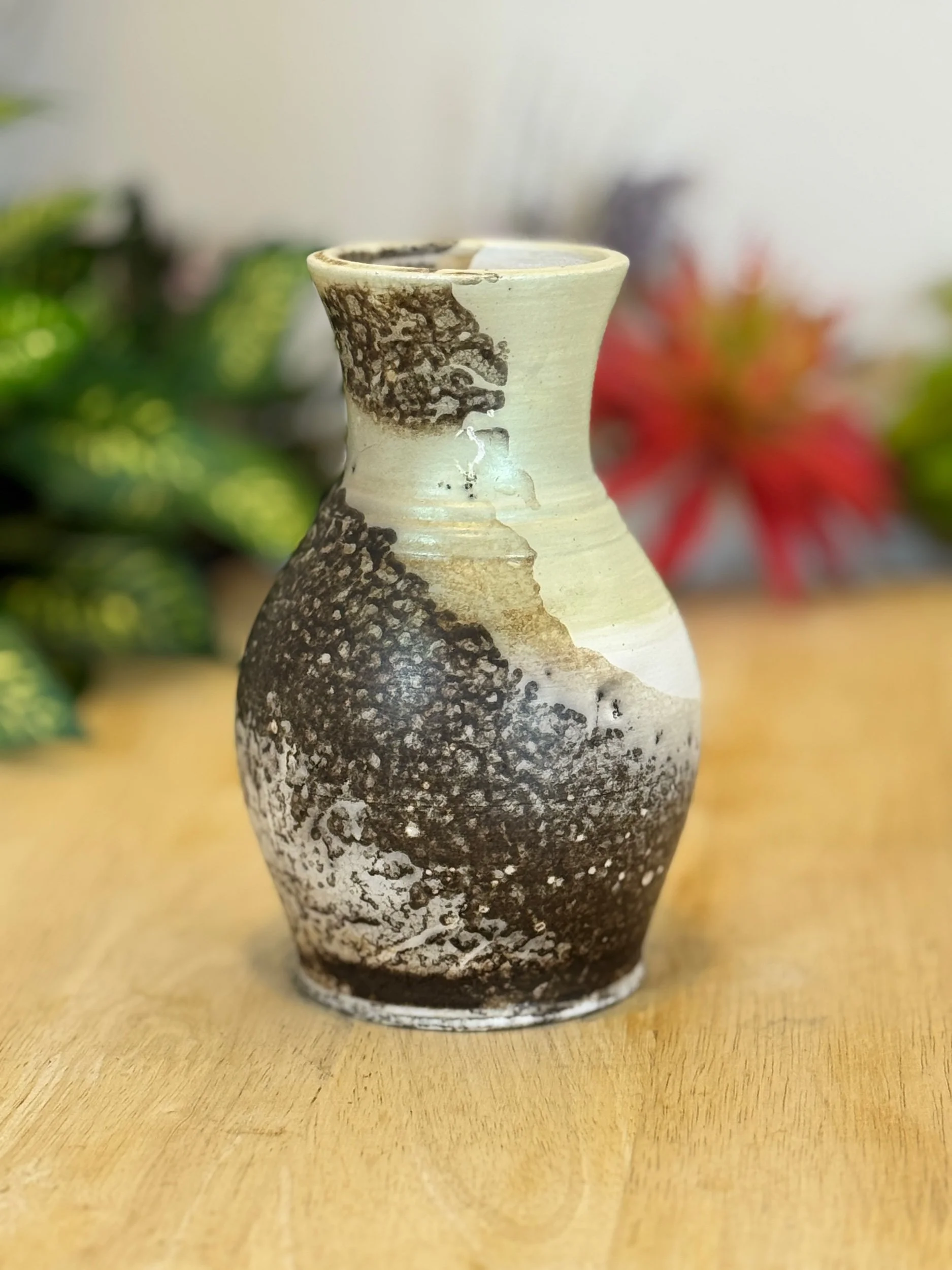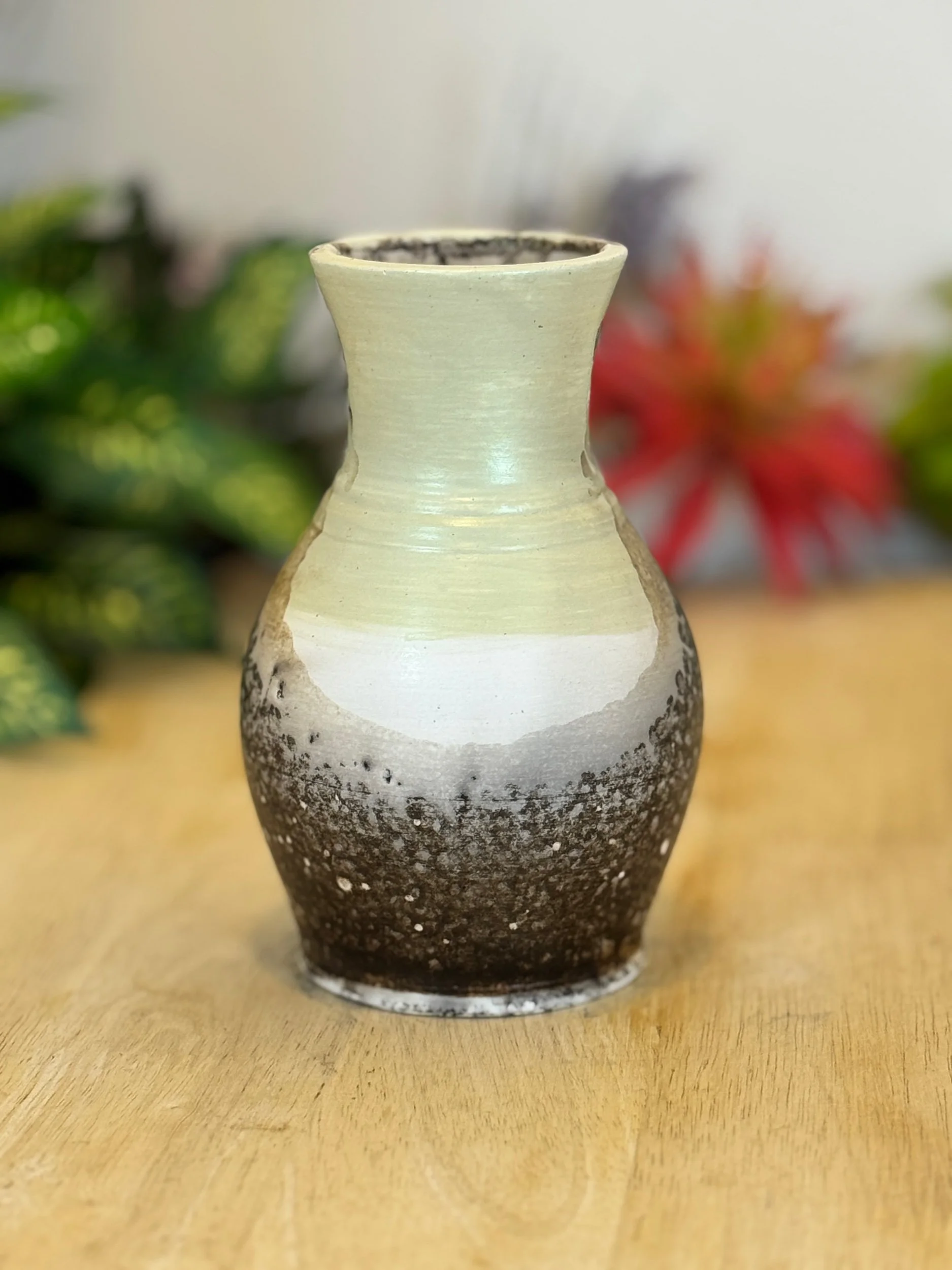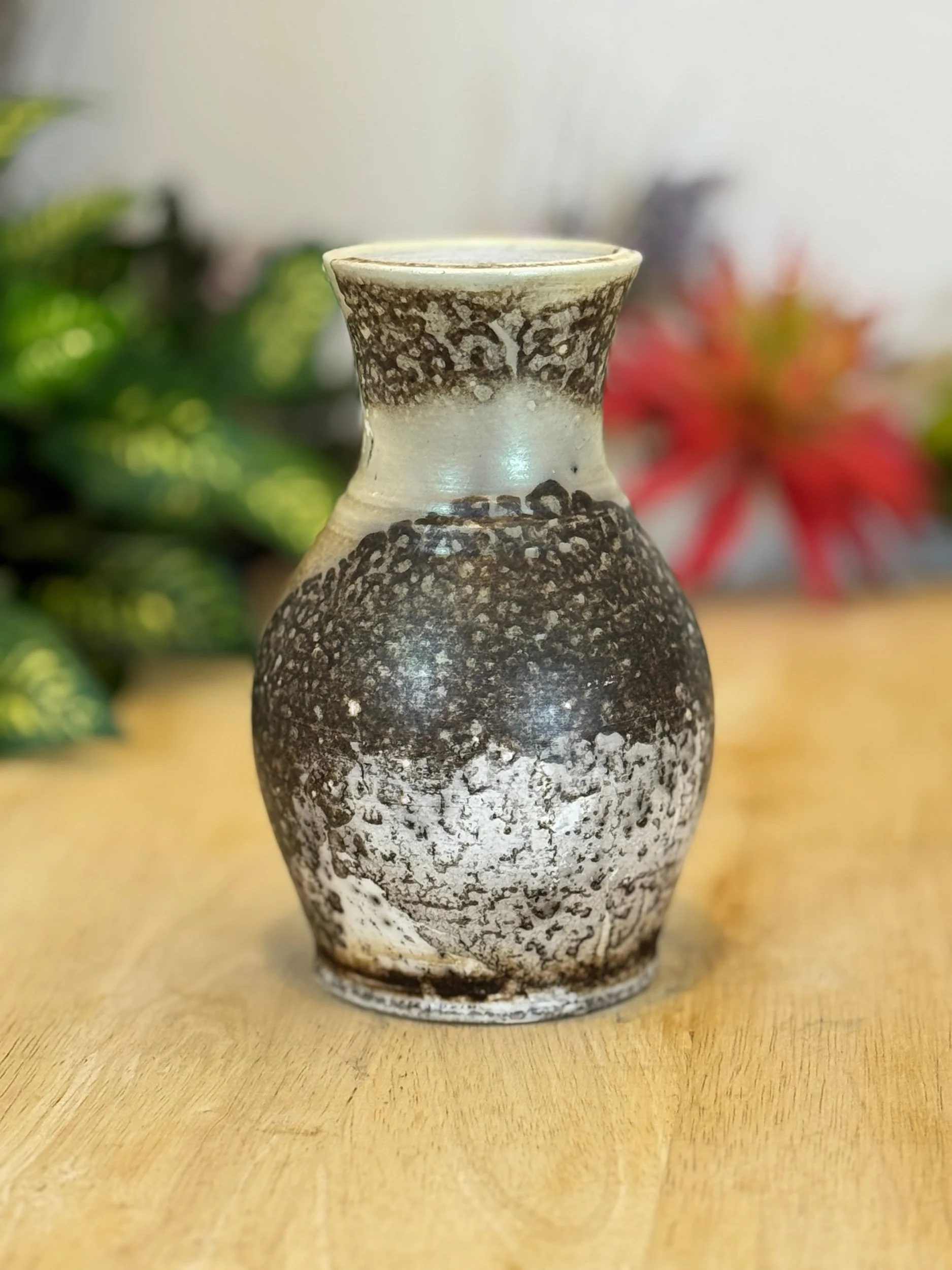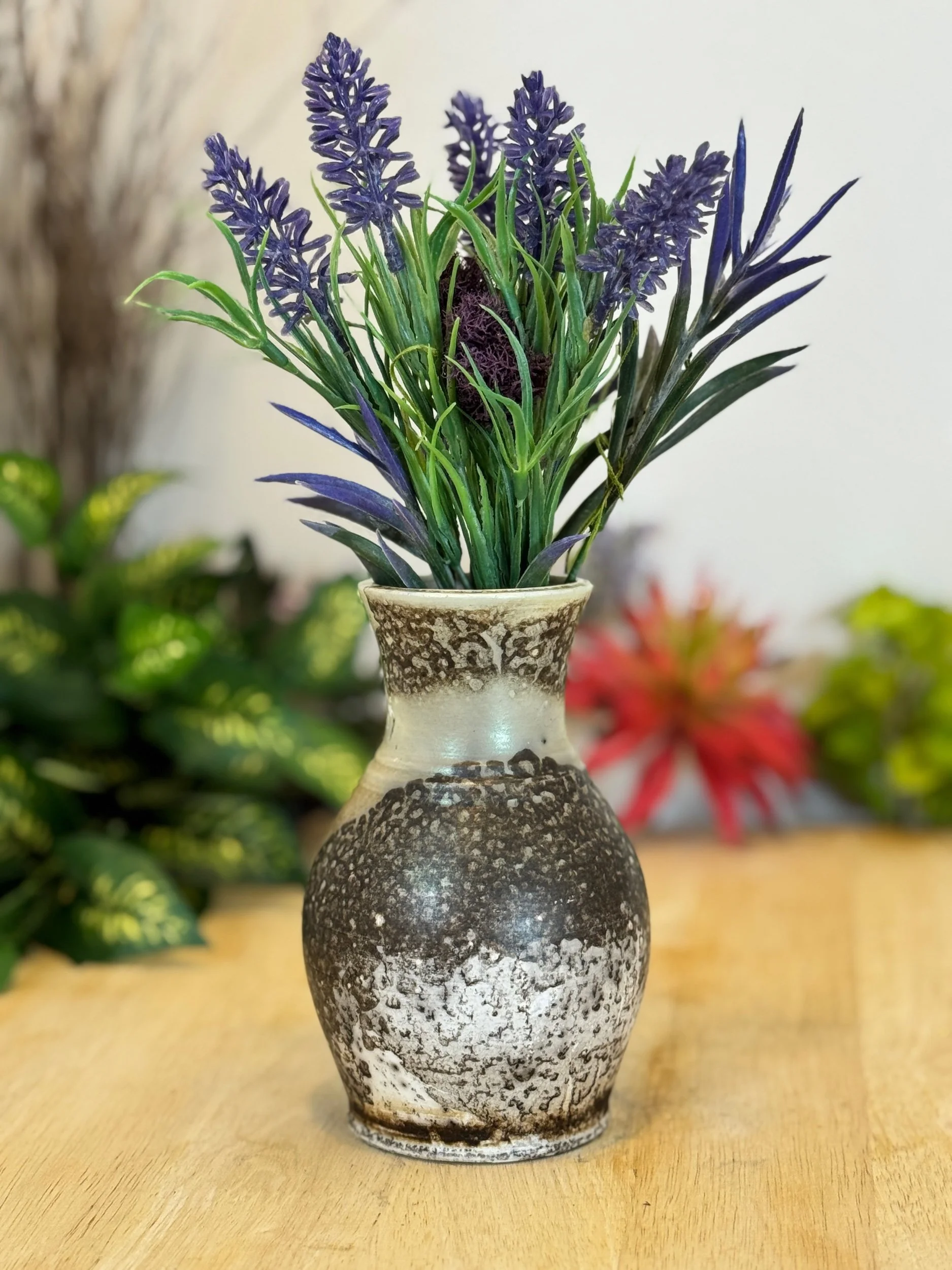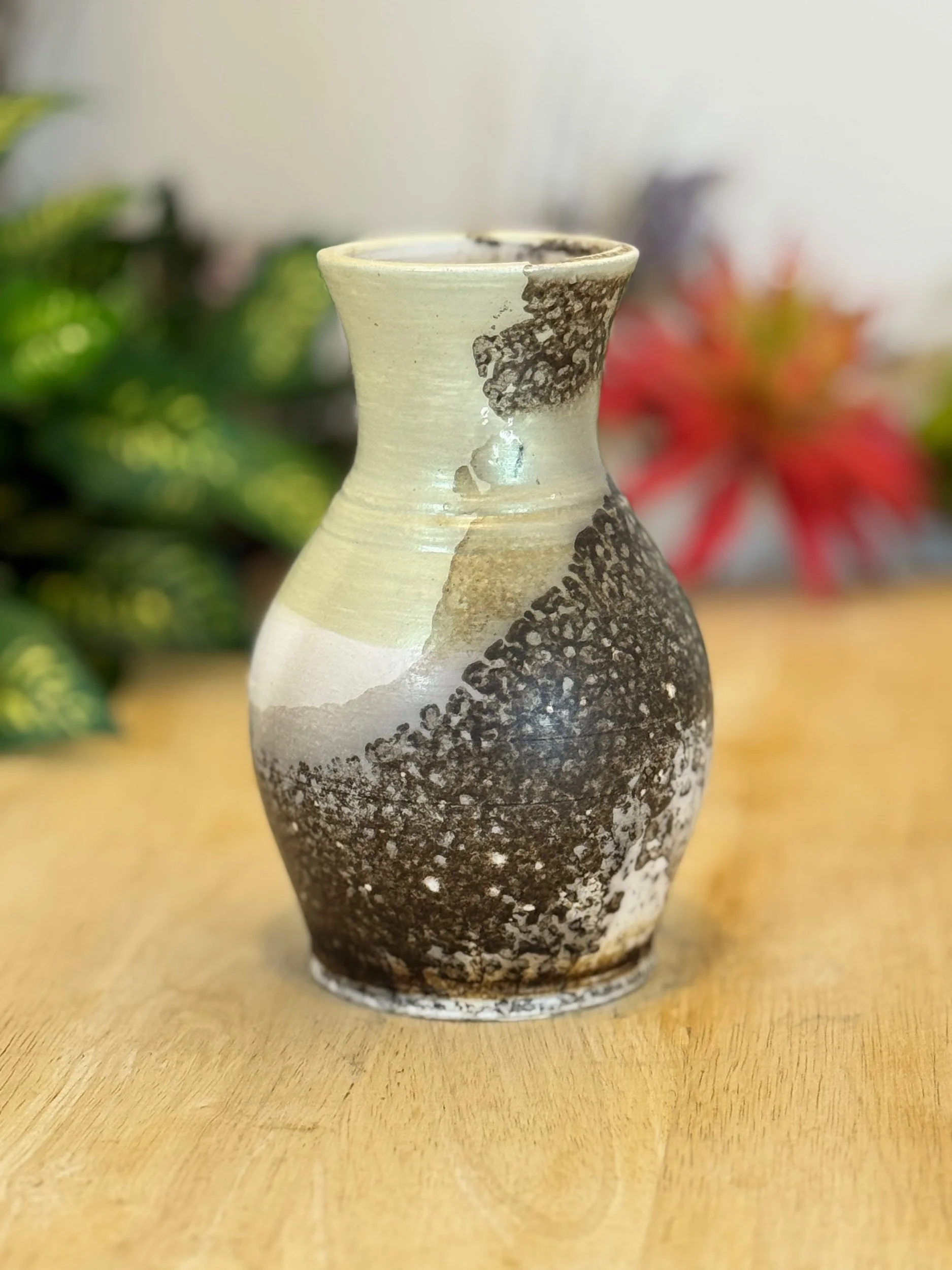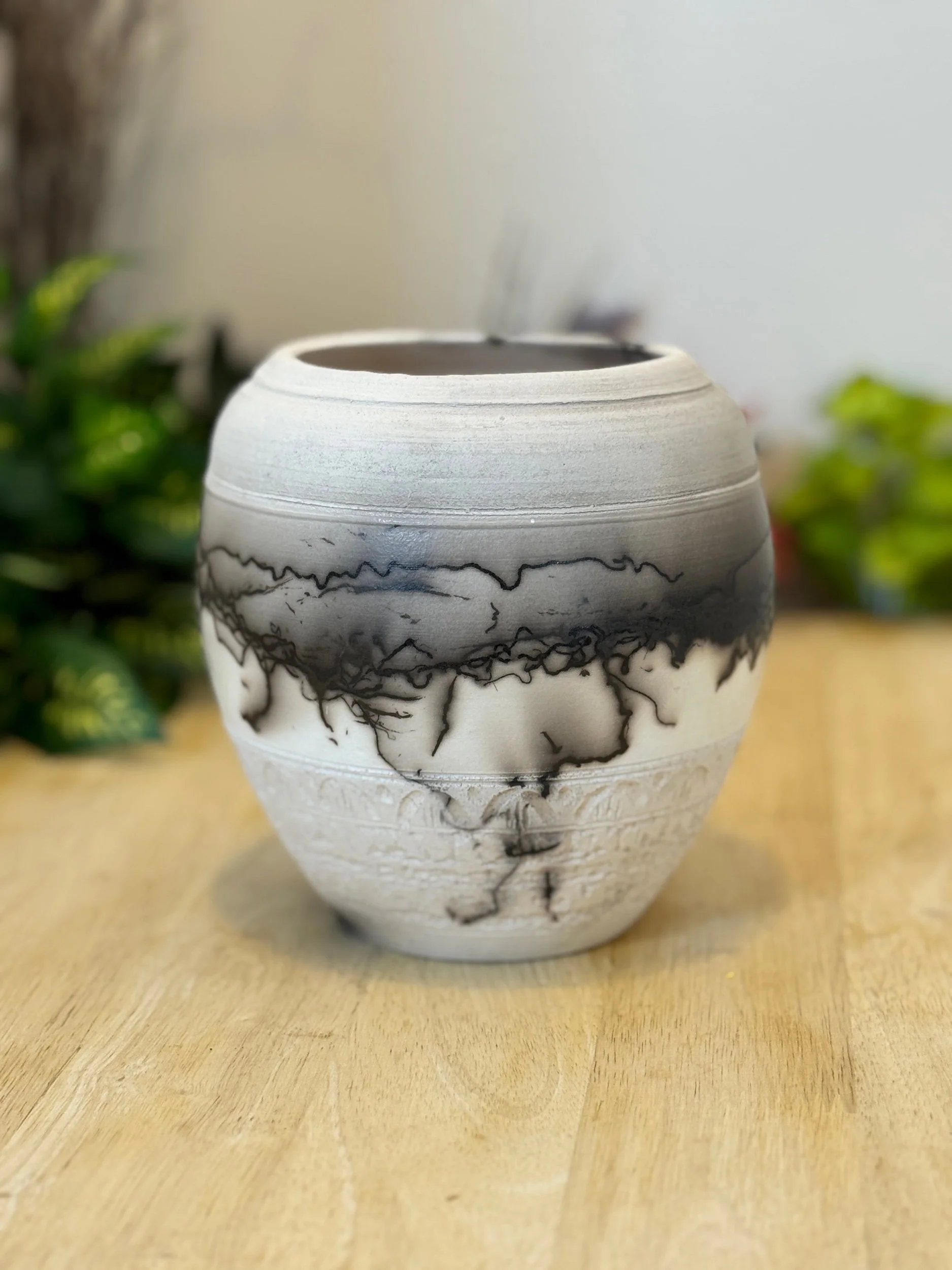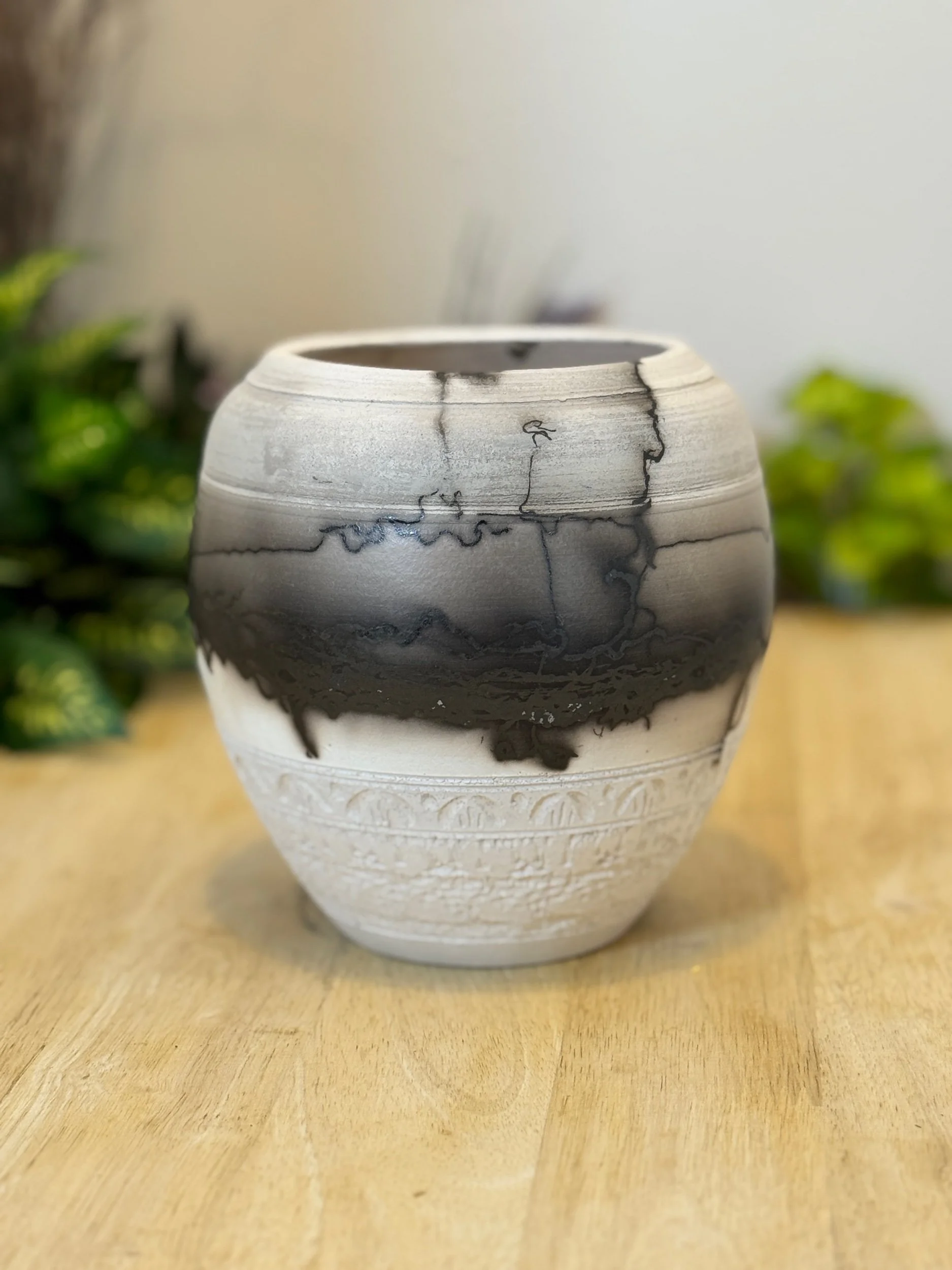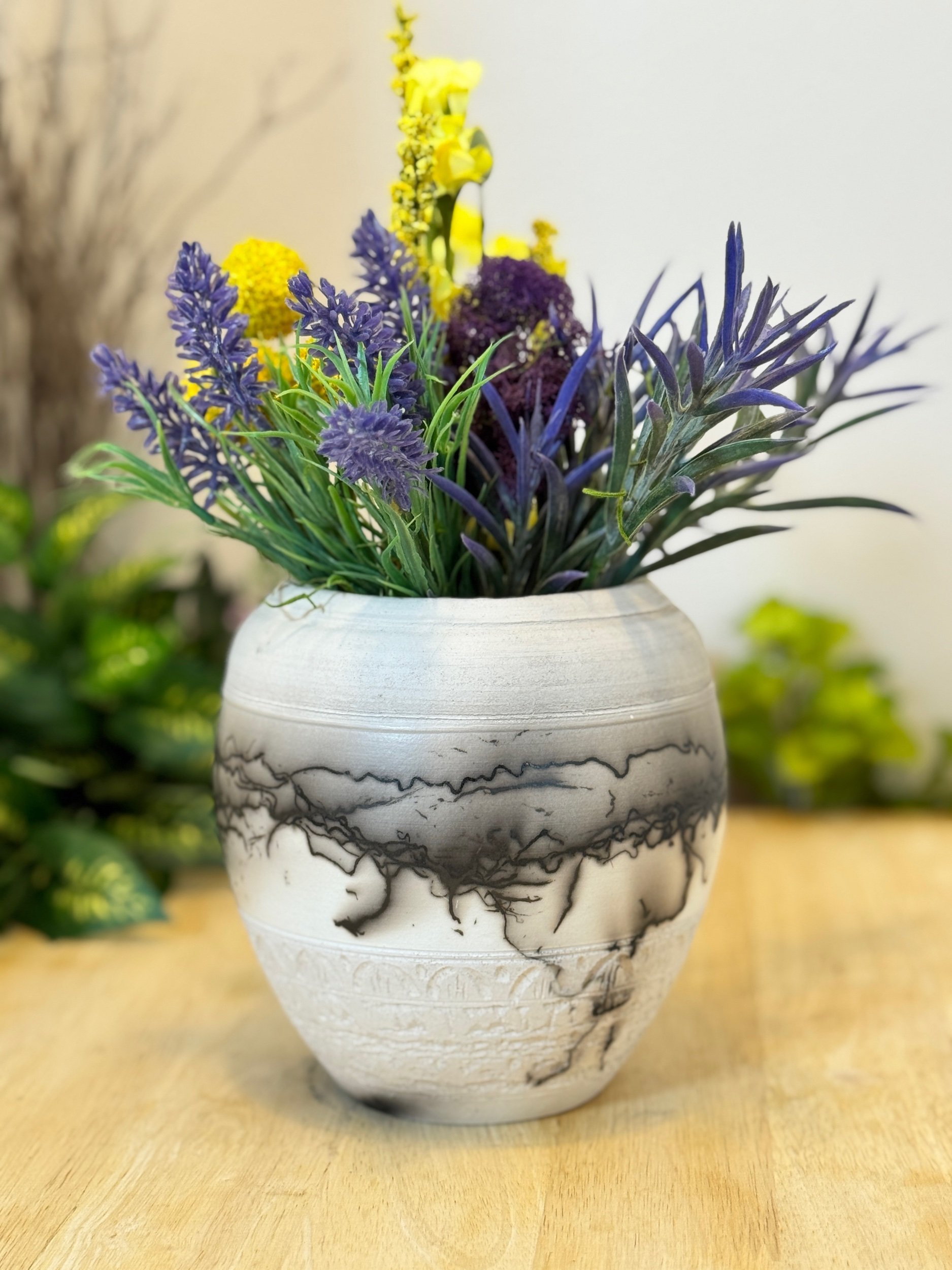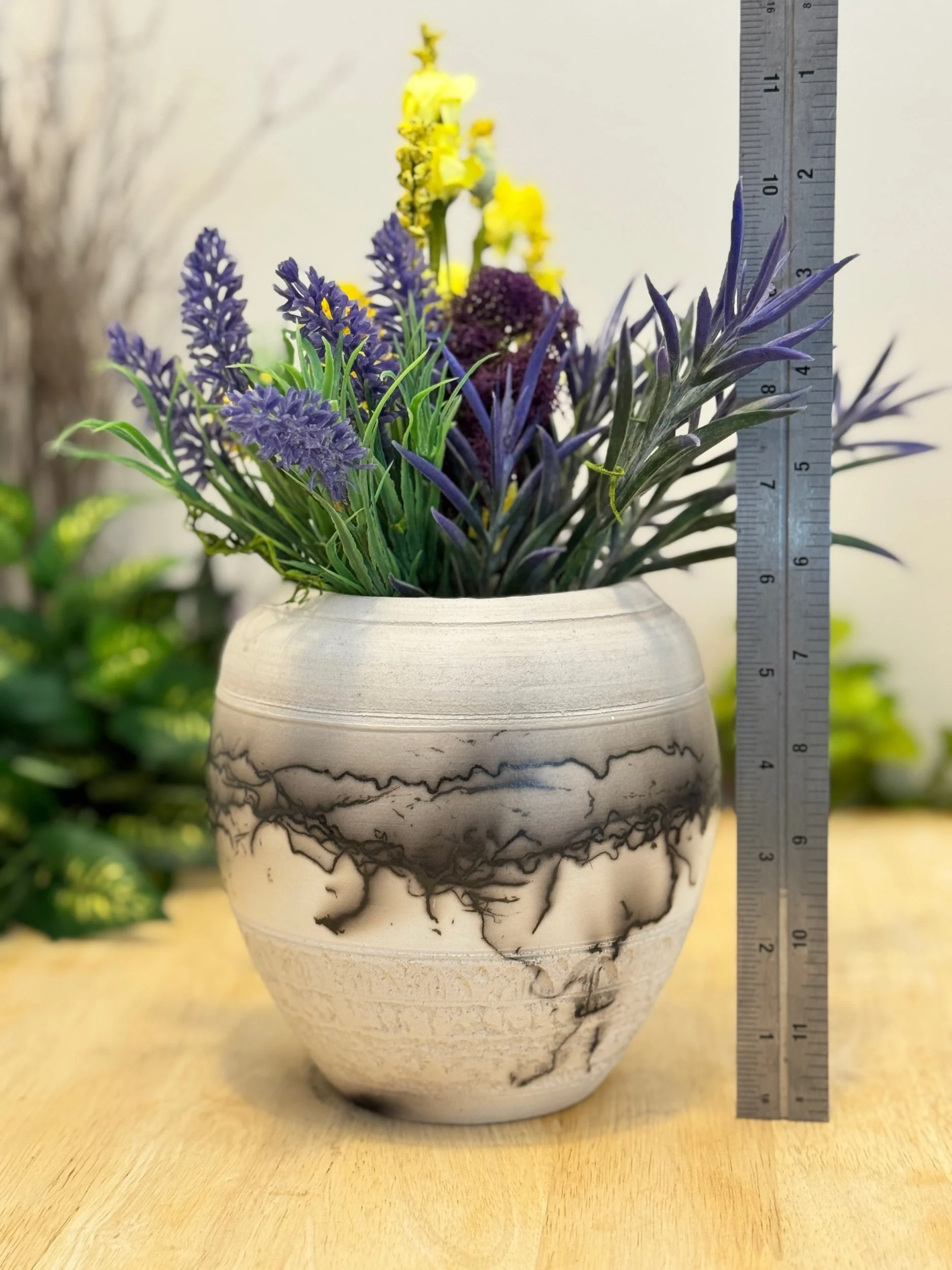The raku firing technique is a traditional Japanese pottery method that began in the 16th century, originally used to create tea ceremony bowls. It involves removing pottery from the kiln while it’s still hot, typically between 1,600°F and 1,800°F (870°C to 980°C), and placing it in a reduction environment, such as a container with sawdust or newspaper. This rapid cooling and oxygen deprivation causes unique effects like crackled glazes, metallic lusters, and varied colors such as black, copper, or iridescent shades.
The process starts with bisque-fired pieces coated with special raku glazes. The kiln is opened early, and the pottery is quickly moved to the reduction chamber, where smoke and carbon interact with the glaze, creating distinctive crackle patterns as the materials contract at different rates. This hands-on, unpredictable technique results in one-of-a-kind pieces, highly prized for their artistic and rustic appeal.

